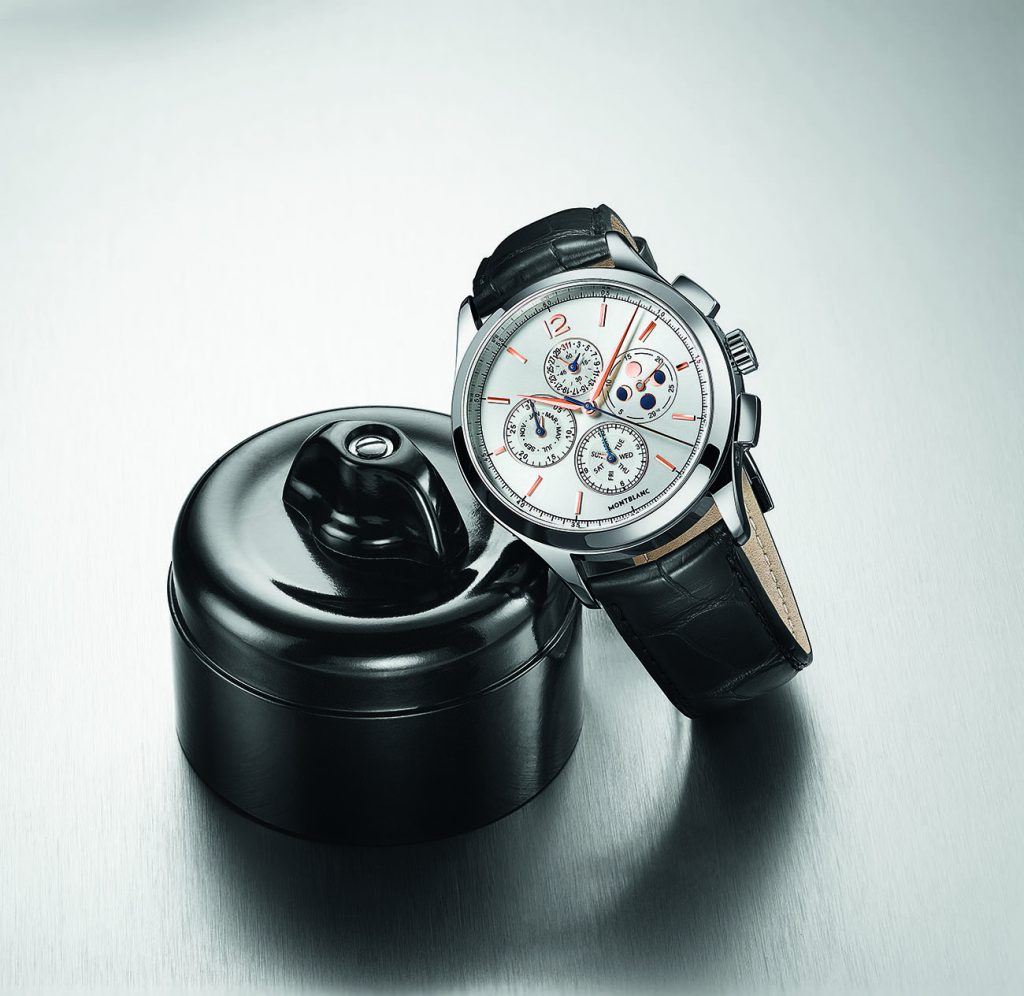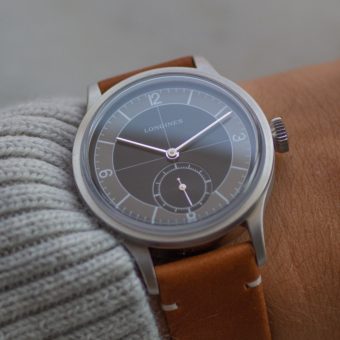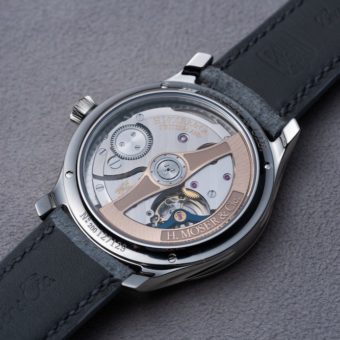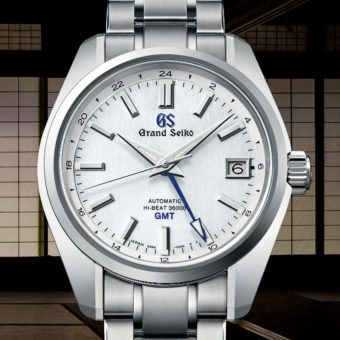The Heritage Chronométrie Chronograph Quantième Annuel from Montblanc features a rare combination of complications: a chronograph and an annual calendar. It has a notable price, too. Our test watch, which has a stainless-steel case, sells for $13,300: you’d expect to pay a lot more, given the movement’s complexity. The rose-gold version is $26,400.

The movement is a Sellita SW 300, comparable to an ETA 2892, enhanced with module 2259 from Dubois Dépraz. The module performs both the chronograph and annual calendar functions.
An annual calendar “knows” the lengths of all the months except February, so the wearer needs to reset the calendar just once each year, at the end of that month. At the ends of all months with 30 days, the calendar mechanism will pass over the 31st and show a “1” on the first day of the new month.
The monthly change begins at about 9:30 pm on the last evening of the month, when a quiet clicking sound can be heard. The hand on the moon-phase display is already in motion: it will arrive at its new position about an hour later, when another clicking sound can be heard. The date changes from the 30th to the 31st around 11 pm, and then advances to the 1st of the following month around midnight. The month hand changes its place at nearly the same moment, while the day hand creeps ahead and arrives at its new position at about 11:50 pm. The date switching is completed shortly after 1:00 am, when a vigilant listener will again hear a quiet clicking sound emanating from the movement. All the calendar displays rely on hands, which are plated with rose gold and match the hands of the time display. The hand above the subdial at 12 o’clock for the running seconds is blue. If it weren’t, it would be hard to distinguish it from the date hand, which shares the same subdial. The chronograph’s central elapsed-seconds hand is also blue.
The wearer can read most of the dial’s displays easily. The month and the elapsed minutes are shown at 9 o’clock. The day and the elapsed hours are indicated at 6 o’clock, and the moon-phase display is prominently located at the “3.” A slender hand points to the unconventional and sophisticated lunar display, which depicts the four main cycles of the moon each month. The lunar cycle begins with a new moon at the bottom of the subdial, continues to a waxing half moon, then to a full moon at the top of the subdial, and onward to a waning half moon. The lunar display is an eye-catcher, and the whole dial looks attractive with its numerous indicators and their numerals, strokes and scales.
But it takes a close look to read the small seconds and date at 12 o’clock, whose subdial, unfortunately, is smaller than the others. The day, month, and elapsed minutes are easy to read. Railway-style markings wreath the periphery of the hour counter, which looks somewhat crowded but is nonetheless legible. None of the watch’s displays is luminous at night.

Faceted, sword-shaped hour and minutes hands extend from the dial’s center, as does the slender, elegant, elapsed-seconds hand. This last ends in a red tip, which points to precisely calibrated strokes around the rim of the dial. These correspond to the 4-Hz rhythm of the movement.
The watch’s rate results were good on the wrist but deviated by an average of 5 to 6 seconds per day on the timing machine, both when the chronograph was running and when it was switched off. The differences among the various positions were greater than 10 seconds.
The chronograph push-pieces, which are large and rectangular, are easy to operate. The fluted crown can be grasped securely to wind the mainspring and reset the hands. The calendar can be reset via little buttons inset into the sides of the case: they’re operated by pressing them with the tip of a corrector stylus, which comes with the watch.
The watch case is polished to a high gloss and has a steeply sloping bezel and curved lugs. The strap is made of high-quality alligator leather, which is made at the Montblanc Pelletteria in Florence. The double-folding clasp is basically quite well made, but the pin is too thin and slips out of the stamped holes easily. A few such minor shortcomings aside, this watch has much to recommend it.
SPECS:
MONTBLANC HERITAGE CHRONOMÉTRIE CHRONOGRAPH QUANTIÈME ANNUEL
Manufacturer: Montblanc Montre SA, Chemin des Tourelles, 2400, Le Locle, Switzerland
Reference number: 114875
Functions: Hours, minutes, small seconds, annual calendar with date, day, and month, moon-phase; chronograph with central elapsed seconds and counters for 30 minutes and 12 hours
Movement: MB 25.09, automatic, based on Sellita SW 300-1 with Dubois Dépraz 2259 annual calendar and chronograph module; 28,800 vph; gold-plated brass balance; Incabloc shock absorption; fine adjustment via Etachron regulator, 42-hour power reserve, diameter = 30 mm, height = 7.7 m
Case: Stainless steel, curved sapphire crystal with nonreflective coating, sapphire window in caseback, water resistant to 30 m
Strap and clasp: Alligator strap with double folding clasp
Rate results (Deviations in seconds per 24 hours, fully wound/after 24 hours):
Dial up +10.0 / +4.0
Dial down +8.9 / +5.0
Crown up -2.0 / -1.9
Crown down +8.4 / +9.9
Crown left +5.0 / +8.3
Greatest deviation of rate 12.0 / 11.8
Average deviation +6.1 / +5.1
Average amplitude:
Flat positions 313° / 282°
Hanging positions 286° / 256°
Dimensions: Diameter = 42 mm, height = 13.96 mm, weight = 112 grams
Variations: With rose-gold case (Ref. 114876, $26,400)
Price: $13,300
Pictures are provided by OK-Photography. This article first appeared in the October 2016 issue of WatchTime; prices may have changed.






